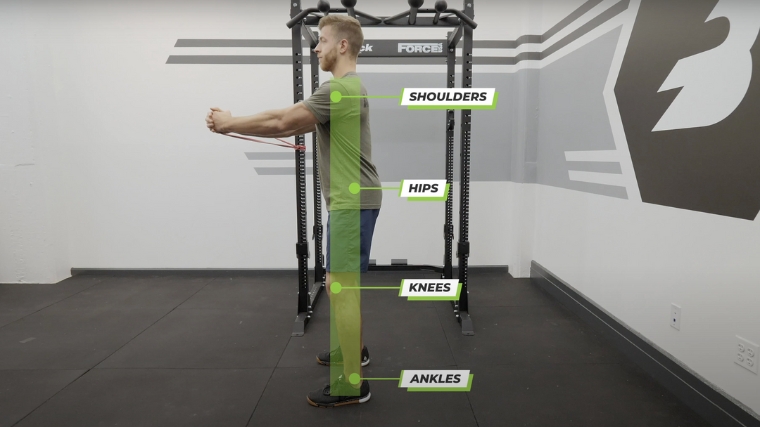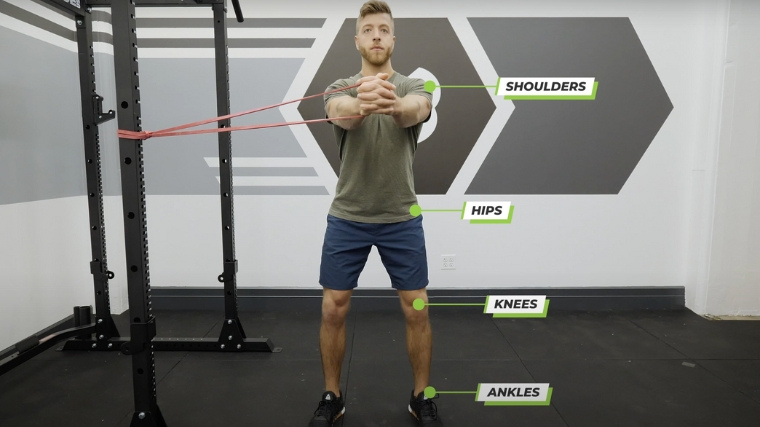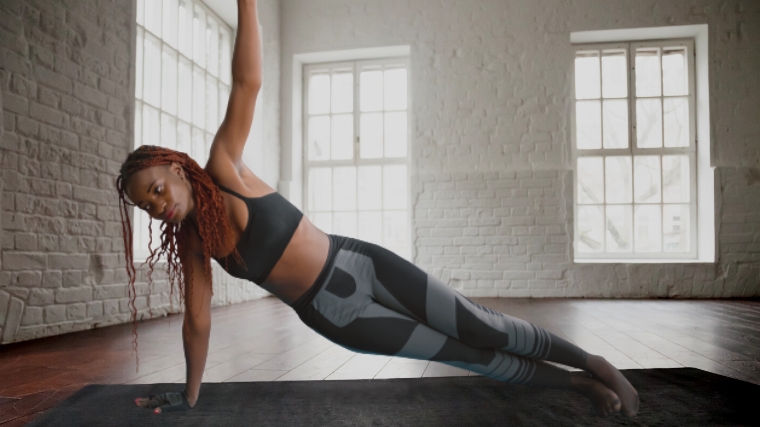You know you’re not training your core enough. You’ve been relying on your deadlifts and squats to keep your core strength up for so long that you can’t remember the last time you did a crunch.
It’s time to eliminate the weakest link in your big lifts — and you know you can do that by making your core stronger. You might also want to build your six-pack along the way. Whatever your goals, the battle of the Pallof press versus the plank rages as you build your core workout program.
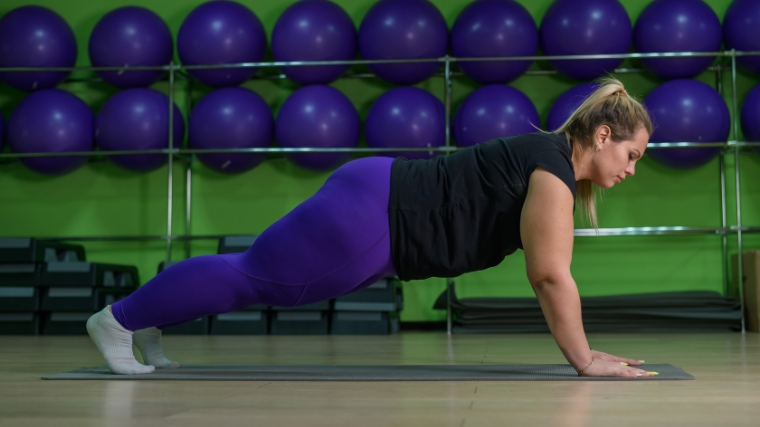
Is the Pallof press better than the plank? Or should the plank take the dominant slot in your core training? Read on to figure out which to include in your core workouts.
Pallof Press Vs. Plank — Form Differences
The Pallof press and plank don’t just require different starting positions. They’re fundamentally different movements that require a whole lot of core stiffness, bracing, and breathing through an isometric contraction. But how each exercise works is very different.
Body Position
When you’re setting up to do these exercises, you’ll have to work very differently. You perform the Pallof press standing, kneeling, or half-kneeling. You’ll set up in front of a stable anchor with a resistance band and get ready from there.
On the other hand, you perform planks on the floor, roughly in a push-up position or braced on your forearms. If you need to, you can also perform the plank from your knees as long as you’re working hard to maintain core integrity. For various levels of difficulty, you can brace your hands, forearms, or feet on a Swiss ball. Either way, you’ll be horizontal instead of vertical.
Movement Vs. Stillness
The strength-building benefits of both of these core moves come from isometric holds. But you’re supposed to stay as still as you can with the plank, holding tension throughout your core and body. On the other hand, the Pallof press features arm movement, while holding your core isometrically.
In both cases, you’re bracing your core throughout the exercise. With the Pallof press you’re training anti-rotation, but the plank has you working on anti-extension. So with the Pallof press, you’ll be resisting side-to-side movement. With the plank, you’ll be resisting extending your back downward.
Both of these “anti” core abilities are tremendously important for your bigger barbell exercises. The more efficiently your core can resist unintentional movement in any direction, the more efficiently it can transmit force. A core that’s better at transmitting force will often allow you to lift heavier weights.
Equipment
One of the big advantages of the plank is that you can drop and perform it pretty much anywhere. You don’t need any equipment to do a plank — just you and the ground. An exercise mat, yoga mat, or padded gym floor is extremely helpful though, especially if you’re doing a forearm plank variation. Still, that’s a lot less than what the Pallof press requires.
To perform a Pallof press, the minimum equipment you’ll need is a resistance band and a stable anchor point at about chest height. Many people use a squat rack or power rack for this. Some athletes will use a cable machine and D-handle attachment to do this exercise. Either way, the set up is a bit more complex than just dropping into push-up position.
Sets and Reps
When you’re programming the Pallof press and the plank, you’ll use significantly different methods of measuring your training volume. Planks are held for time, which means you’ll use seconds rather than repetitions to keep track of your work.
The Pallof press, on the other hand, does involve repetitions. Therefore, with this exercise, you’ll be working with a more traditional set and rep scheme.
Here’s what this might look like in action:
- Plank: 60 seconds x 3
- Pallof Press: 15 x 3 per side
How to Do the Pallof Press
When you’re looking to perfect your Pallof press, the first trick is to find just the right height for your resistance band anchor or cable machine setting. Regardless of whether you’re standing or kneeling, aim to set the anchor directly at chest height.
From there, here’s what to do next:
- Stand perpendicular to your anchor point so that the power rack (or whatever anchor you’re using) is off to your side. Hold the band or D-handle at your chest, then step to the side away from the anchor point until there’s tension in the band.
- Squeeze your shoulder blades together, keeping a slight but active bend in your knees. Brace your core, pressing out into all sides of your core (including the back and sides rather than just flexing those visible six-pack muscles).
- Press your arms forward. The band should be pulling you toward the anchor point (if it’s not, step a little farther away). Resist shifting your shoulders or letting your torso twist in any way. Do not rotate your hips.
- With your shoulder blades still back and your chest up, return the band to your chest under slow control. Again, do not shift your hips, shoulders, or torso in any way.
- Repeat for reps.
How to Do the Plank
The plank might seem like an extremely simple-to-pull-off exercise, but it’s far from a no-brainer. Sure, you can just hop onto the ground and stay there for however many seconds you can. And make no mistake — holding the position properly is tough, even if you’re not doing everything you can to optimize your form.
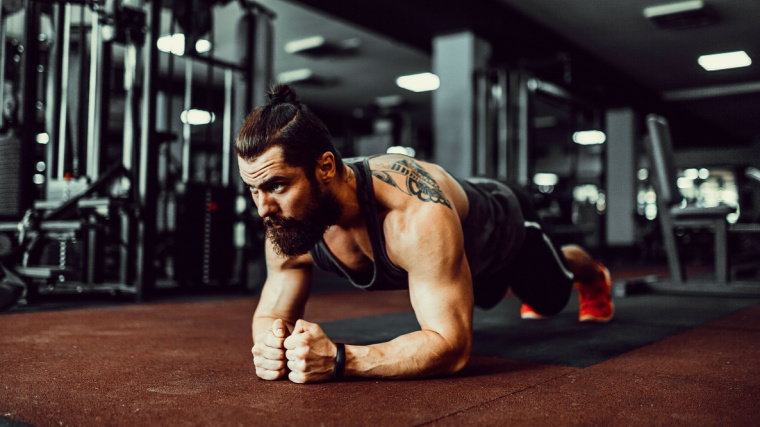
But here, you’ll learn how to hold a plank most effectively to really get the most bang for your buck. Don’t be alarmed if holding so much tension means you can’t hold a plank quite as long as you have in the past. You’ll build your seconds up again over time.
- On a yoga mat or exercise mat, get into a push-up position with your hands underneath your shoulders and your feet extended behind you. The closer your feet are to each other, the more challenging the exercise will be.
- Push your core out from all directions (not just squeezing the front of your abs). Also squeeze your glutes, quads, triceps, and hamstrings. Hold steady and breathe fully into your core.
- Keep your shoulders in line with your hips and actively press your hands into the floor. Do not let your hips drop or rise.
- While holding your plank, breathe slowly and deeply, taking full breaths in and out through your belly.
Similarities Between the Pallof Press and Plank
If you’re looking to design a core training session for yourself and you’ve stumbled across both the Pallof press and the plank, you’re not doing it wrong. Both of these exercises are excellent for building core strength and stamina when you perform them correctly.
Instead of actively moving your core, both the Pallof press and the plank are about resisting movement through an isometric contraction. With the plank, you resist letting your hips sink or rise. You’re training anti-extension, which comes in very handy when you’re maintaining spinal integrity under a heavy load.
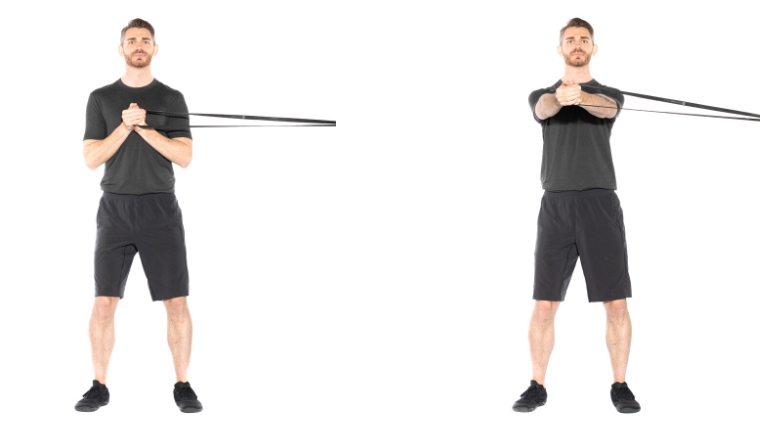
With the Pallof press, you’re also fundamentally resisting movement. Even though your arms are moving, the real action is happening in your core in terms of anti-rotation. You’re resisting both being pulled toward the anchor point and leaning away from the anchor point to compensate.
Because both of these exercises involve resisting movement, they’re excellent at helping your core maintain a steady, stable position when you’re dealing with a loaded barbell. In that sense, these moves are both designed to help you get stronger at your big lifts.
What’s more, both moves help you learn to breathe while maintaining tension in your core. This skill is absolutely essential whether you’re squatting three plates for reps or attempting a deadlift PR (personal record). Both the Pallof press and the plank are low-pressure ways to practice breathing and bracing during very high-pressure situations.
Paloff Press Vs. Plank — Performance Differences
Just because they help you reach a lot of the same end goals doesn’t make the Pallof press and the plank the same lift. While one is focused on resisting side-to-side movement, the other is all about resisting up-and-down movement. This makes a big difference when it comes to the effects of each exercise.
Hypertrophy and Strength
Neither of these movements is associated with an extreme amount of muscular hypertrophy. While training your core — especially if you don’t typically do so — can indeed help you develop your core muscles, you’ll likely want to put your muscles under more pressure to really build out muscle mass.
That said, the Pallof press is better known for building strength in the obliques, since it targets anti-rotation. The plank is more associated with strengthening the rectus abdominis.
Both moves have crossover across the entire core. But if you’re looking for a more direct way to target the obliques than the traditional plank, the side plank shares a bit more in common with the Pallof press.
Coordination
The Pallof press and the plank can both help improve a lifter’s coordination — but they do so in very different ways.
With the plank, you’re isometrically contracting so many muscles at once that you’re training yourself to move the entire body more or less as one. You’ll be holding your body completely still and making sure you don’t shift to take tension off your muscles. This will be challenging, but you will only be focused on stillness and breathing.
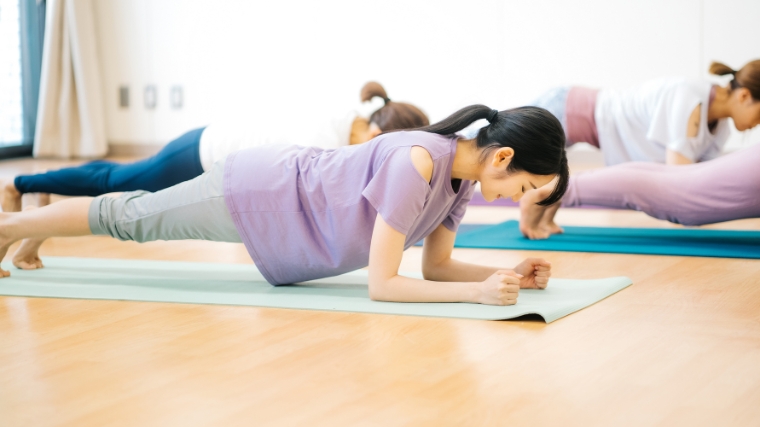
[Read More: The Best Ab Exercises & Workouts, According to a CPT]
In contrast, the Pallof press challenges your coordination by having you hold most of your body still while moving your arms. You won’t necessarily have to radiate quite as much tension through your entire body as with the plank.
But, since you’ll be moving some parts of your body while keeping others in an isometric hold, you’ll get a more dynamic challenge to your balance and coordination.
Which Is Better for Strengthening Your Main Lifts?
“Better” is almost always a difficult question in strength sports. Very often, the answer depends on your experience level, your own strengths and weaknesses as an athlete, and your goals.
If you want to get better at dynamic anti-rotation because your midline keeps shifting from side to side during your snatch, the Pallof press is going to win out. But if you need to build up to a perfect hollow-body hold to support strict pull-ups, you might opt for a plank instead.
The Pallof press might take the lead if you’re looking to boost core stability during your bench press, since you’ll get practice moving your arms while your core stays steady. But if your back keeps shifting out into hyperextension — or overly rounding — during your squat or deadlift, the plank might pull back into the number one slot.
Carefully assess what you’re trying to accomplish and why. That will usually shed some light on which exercise to prioritize during core training.
How to Program the Pallof Press Vs. Plank
The plank and Pallof press are both extremely versatile exercises to program. Either one can pop up in your warm-up, core-specific workouts, or even in supersets with your bigger lifts.
Warm-Up
Many athletes choose to get some core work done during their warm-up for two main reasons. The first is core activation: you don’t want to start a deadlifting session without getting your core prepped and ready. The second reason is to avoid leaving all the core work until the end of a training session when you’re mentally and physically tired.
If you’re doing planks as part of your warm-up, don’t feel the need to go all out. Do a couple of sets — between 30 and 60 seconds each — to get your core fired up and ready to go.
Take a similar approach with Pallof presses. There’s no need to go hard and heavy here. Still, be sure to emphasize quality — move slowly and deliberately, feeling your core engage with each rep. Try two sets of 15 reps per side with a lighter band to get the party started.
Core-Specific Workouts
If you’re setting aside time in your program for core-specific workouts — and you probably should be — including one or both of these exercises is a no-brainer. The Pallof press will help take care of your anti-rotation needs, while the plank will cover your anti-extension requirements.
Add a movement or two for anti-flexion — think back extension holds — and a couple for anti-lateral bending, like unilateral farmer’s carries and side planks. Then, toss in a flexion movement for good measure — crunches are an oldie but goodie — and you’re in business.
Try three to four sets of 10 reps per side with a heavier band for Pallof presses toward the beginning of your core workout. Add two to four sets of 45 to 75-second planks in the middle of your core workout to avoid burning yourself out too early or slacking in your form by doing them last.
Supersets
If you really want to keep your core activation game on point, consider supersetting light Pallof presses or short planks with big strength-building lifts. By peppering core training in between your sets of squats, for example, you’ll be keeping your core activated even during rest. This may be particularly helpful for powerlifters, who may rest for extended periods of time between each set.
Keeping your core activated — and keeping your mind focused on your core — might be critical for enhancing your big lift performance. If you tend to forget to brace, this strategy might be for you.
On the other hand, if your core is currently weak and/or you’re attempting to move extremely heavy loads, you might want to hold off on these supersets. You want to keep your core active without adding significant fatigue.
If you’re not able to perform a 30-second plank or 10 reps per side of Pallof presses without feeling the burn, put a pin in this strategy until your core is stronger.
Pallof Press or Plank — Who Wins?
In the great debate of the Pallof press versus plank, it’s hard to select a clear-cut winner. Both exercises are solid core movements that stand to enhance your program from multiple angles.
But if you’re really looking for an answer, it’ll likely lie here: if you want to emphasize anti-rotation, choose the Pallof press. If you want to practice breathing under pressure while maintaining postural integrity, the plank is your pick. Doing both is also a strong option.
Featured Image: Reshetnikov_art / Shutterstock
